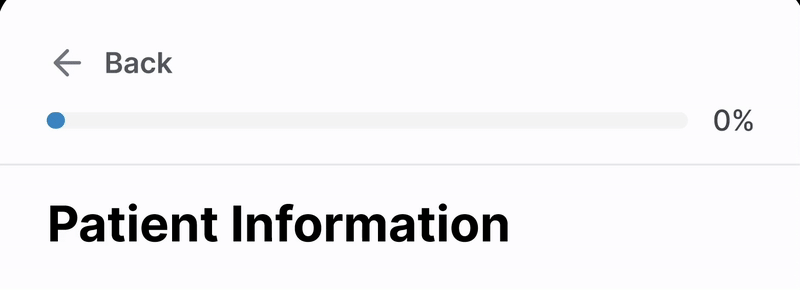Background
Chrona is a patient-first mobile app that modernizes the check-in process at healthcare clinics. Designed for busy patients and overburdened front desk staff, Chrona offers seamless digital check-ins, appointment tracking, and secure access to long-term medical information. As the sole UX/UI Designer and Researcher, I led the end-to-end design process from initial ideation to final UI prototyping.
Timeline
This project followed a four-week sprint, moving from research through polished UI and testing. Each phase built intentionally on the last, ensuring user needs and usability stayed central throughout.
The Problem
Patients are often asked to fill out redundant paperwork when they arrive at a clinic, leading to delays and unnecessary stress especially for new patients. On the clinic side, front desk staff are overwhelmed with manual data entry and patient intake, increasing the chance for errors and slowdowns.
The Goal
Design a solution that gives patients control over their check-in process and long-term health information while reducing administrative friction for clinics.
Research
To better understand common pain points, I used AI-assisted personas and scenario simulations that mimicked patient and clinic staff behavior. While not a substitute for live interviews, this method helped generate user-centered insights that guided my design decisions.
I found that patients:
Are unsure what paperwork will be required at check-in
Want control over how their personal and medical info is shared
Appreciate transparency, simplicity, and real-time status updates
Meanwhile, clinics:
Struggle with bottlenecks at check-in
Deal with inconsistent or incomplete patient data
Would benefit from automated intake workflows
Key Features
Smart Questionnaire
To avoid overwhelming users, I split the long-term health intake form into small, manageable sections: personal info, insurance, medical history, allergies, lifestyle, and symptoms. Each section updates a progress bar and can be saved for future visits.
Real-Time Appointment Tracker
Users can track their appointment status as it progresses from "Waiting Room" to "Being Seen," removing uncertainty about delays.
QR Code Arrival
Instead of stating their name and birthday aloud at the front desk, patients scan a personalized QR code to complete check-in. This protects privacy and speeds up the process.
Health Record Autofill
Users can securely import their health information from their provider's patient portal using encrypted, HIPAA-compliant tech. Each section is editable before submission.
Profile + Physician Cards
The home dashboard shows upcoming appointments and saved physicians. Health data, billing, and notifications are grouped clearly on the profile page.
Simplifying Complex Tasks
To improve the user experience, I broke long forms into digestible sections with clear progress indicators, helping users feel more in control of the process. I designed fallback flows for cases where autofill wasn’t supported, ensuring a smooth manual entry option was always available. Rather than showing a single, overwhelming review screen, I used modals to confirm each section individually, allowing users to focus on one category at a time. I also removed persistent navigation during form input to reduce distractions and keep users focused on completing their information.
Reflections
Chrona was an exercise in blending clinical data with compassionate design. The strongest feedback came from testers who praised the segmented form flow and QR arrival scan. I was also challenged to think about data security and patient autonomy, two critical areas in health tech.
Though the initial research wasn't user-interview-based, AI simulations offered valuable direction and allowed me to test flows with quick iteration.
Next Steps
Explore integration with Epic, Cerner, or other EHR APIs
Expand to web and tablet platforms
Add multilingual support and provider messaging







